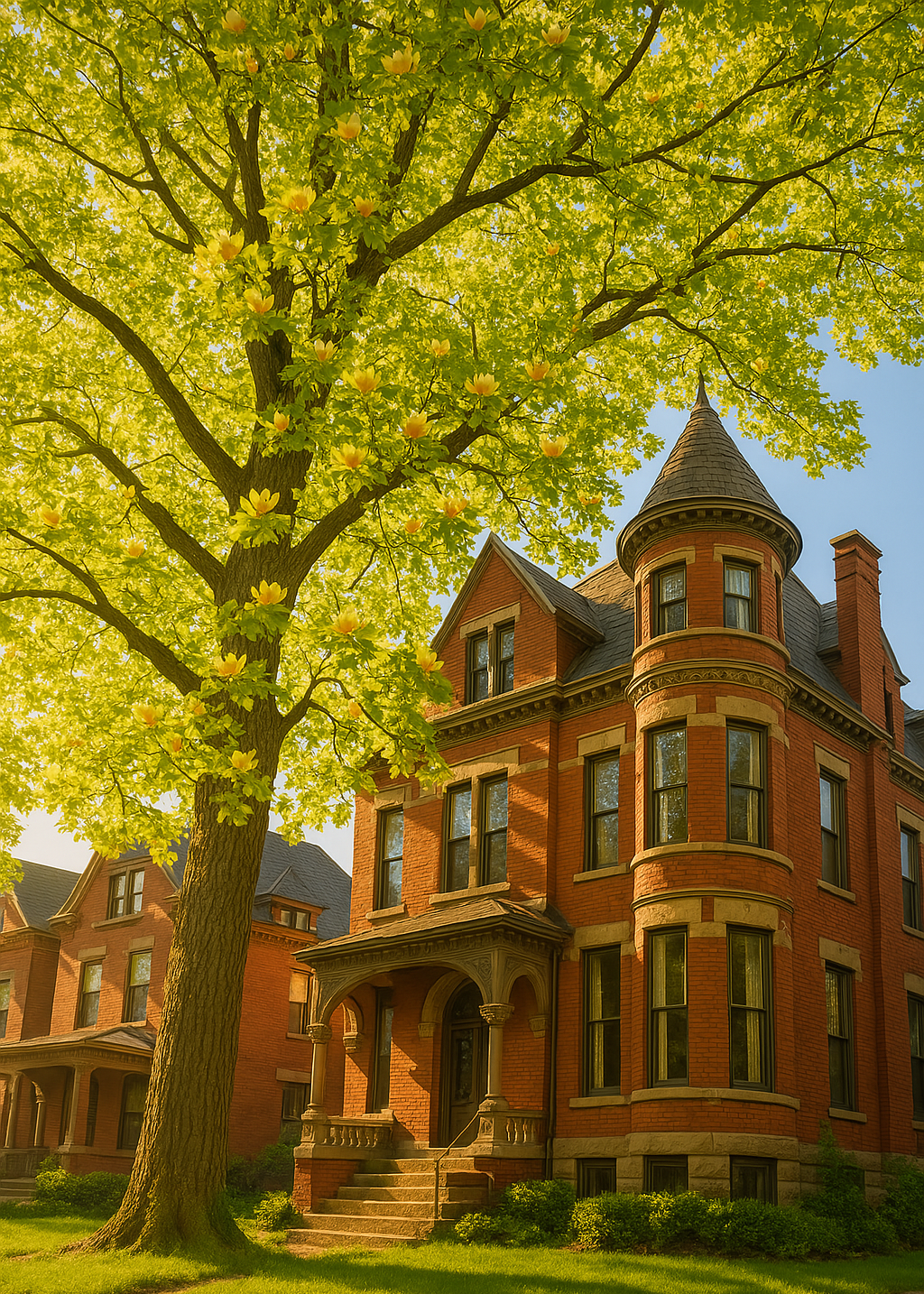The Tulip Poplar: A Louisville Staple with Serious Style

Smart pruning keeps your Tulip Poplar strong and storm-ready
You ever find yourself walking through Old Louisville (40208), just kind of zoning out, and then bam — there it is. One of those towering trees with the giant leaves and flowers that look like something out of a storybook. That’s your Tulip Poplar.
Most folks around here know the Tulip Poplar as Kentucky’s state tree, but if you live in places like St. Matthews (40207) or Crescent Hill (40206), you don’t need a textbook to tell you that — just look up. These trees are part of the neighborhood, woven right into the streets and skyline.
Now, sure — it grows fast and seems to do alright on its own. But don’t let that fool you. Even a tough native like the Tulip Poplar needs a little attention now and then if it’s gonna stay safe and looking sharp.
What Makes This Tree So Special?
Tulip Poplars are kind of the showboats of the tree world.
- They shoot up to 150 feet tall
- Their flowers are like tulips painted by nature herself
- Their leaves are bold, big, and totally unique
- And the trunk is straight, tall, and ideal for clean shade
In Anchorage (40223), Barbourmeade (40241), and other leafy neighborhoods, these trees bring height and heritage. But fast growth comes with baggage. These trees can get messy and brittle if you’re not careful.
Don’t Let Their Good Looks Fool You
We’ve lost count of how many times we’ve gotten the “I didn’t think anything was wrong until it snapped” call.
Tulip Poplars grow fast, which can mean weaker wood. One good storm, especially in spots like Jeffersontown (40291) or Fern Creek (40229), and you’ve got limbs down, cars dented, or worse.
Aside from limb drop, these trees shed heavy leaf loads in fall, and sometimes attract aphids — little bugs that leave behind sticky residue on everything from porches to car windshields.
When to Prune a Tulip Poplar in Louisville
Late winter or early spring is the best time to prune. That’s when the tree is dormant and the stress of cutting is minimal. If it’s been more than five years since your Tulip Poplar’s last trim, it’s time to take a look.
In tighter neighborhoods like Buechel (40218) and Highview (40228), where trees sit close to structures, regular pruning every 3–5 years can prevent roof damage, sidewalk issues, and broken limbs.
Learn more about tree pruning services in Louisville.
DIY or Don’t? A Quick Breakdown
Some parts of Tulip Poplar care are totally manageable. Others are not worth the risk.
Okay to DIY:
- Mulching 2–4 inches deep around the base (not touching the trunk)
- Cleaning up fallen branches and leaves
- Watering during dry spells
Call a Pro:
- Removing large limbs
- Crown shaping or reduction
- Anything involving a ladder or ropes
Certified Arborist Tip:

Smart pruning keeps your Tulip Poplar strong and storm-ready
“Co-dominant stems are a silent issue. If you’ve got two main trunks growing from the same point, that’s a split waiting to happen. We catch these a lot during post-storm cleanups, especially in Okolona (40219) and Hikes Point (40220).”
These Trees Give Back Big Time
Beyond their beauty, Tulip Poplars offer serious ecological benefits:
- A single tree absorbs over 2,000 pounds of CO2 per year
- Deep roots stabilize hillsides and reduce erosion in neighborhoods like Prospect (40059)
- Their flowers feed early-season pollinators like bees and butterflies
- Their canopies can reduce neighborhood temperatures by up to 9°F
That means one tree can literally help clean the air, cool the street, and support wildlife — all in your backyard.
Mistakes to Avoid
Let’s save you a few future headaches.
- Don’t plant them too close to your house. Give them 30–40 feet of clearance.
- Don’t let limbs hang over the roof. Prune before it’s a problem.
- Never pile mulch against the trunk. Keep it flat like a donut, not a volcano.
Want to be sure your tree’s in good shape? Book a tree health assessment.
Zip Codes We Serve (Hint: Probably Yours)
We’ve trimmed, rescued, and sometimes removed Tulip Poplars all over Jefferson County — in yards big and small, from Douglas Hills (40243) to Germantown (40217). There’s a good chance we’ve worked on one right down your street.
Want to Learn More?
This is one of our favorite trusted sources for Kentuckians:
University of Kentucky: Tulip Poplar Tree ID Guide
It’s packed with facts, planting guidance, and species-specific insight straight from forestry experts.
Let’s Take Care of Your Tree the Right Way
You’ve got a Tulip Poplar in your yard — and that’s not just any tree. It’s a Kentucky landmark with deep roots and real impact.
Let’s help it stay strong, safe, and standing tall for decades.
If there’s a big Tulip Poplar in your yard and it’s starting to make you wonder if it’s still safe — don’t stress. You don’t have to guess. We’ll take a look and tell you what’s really going on.
